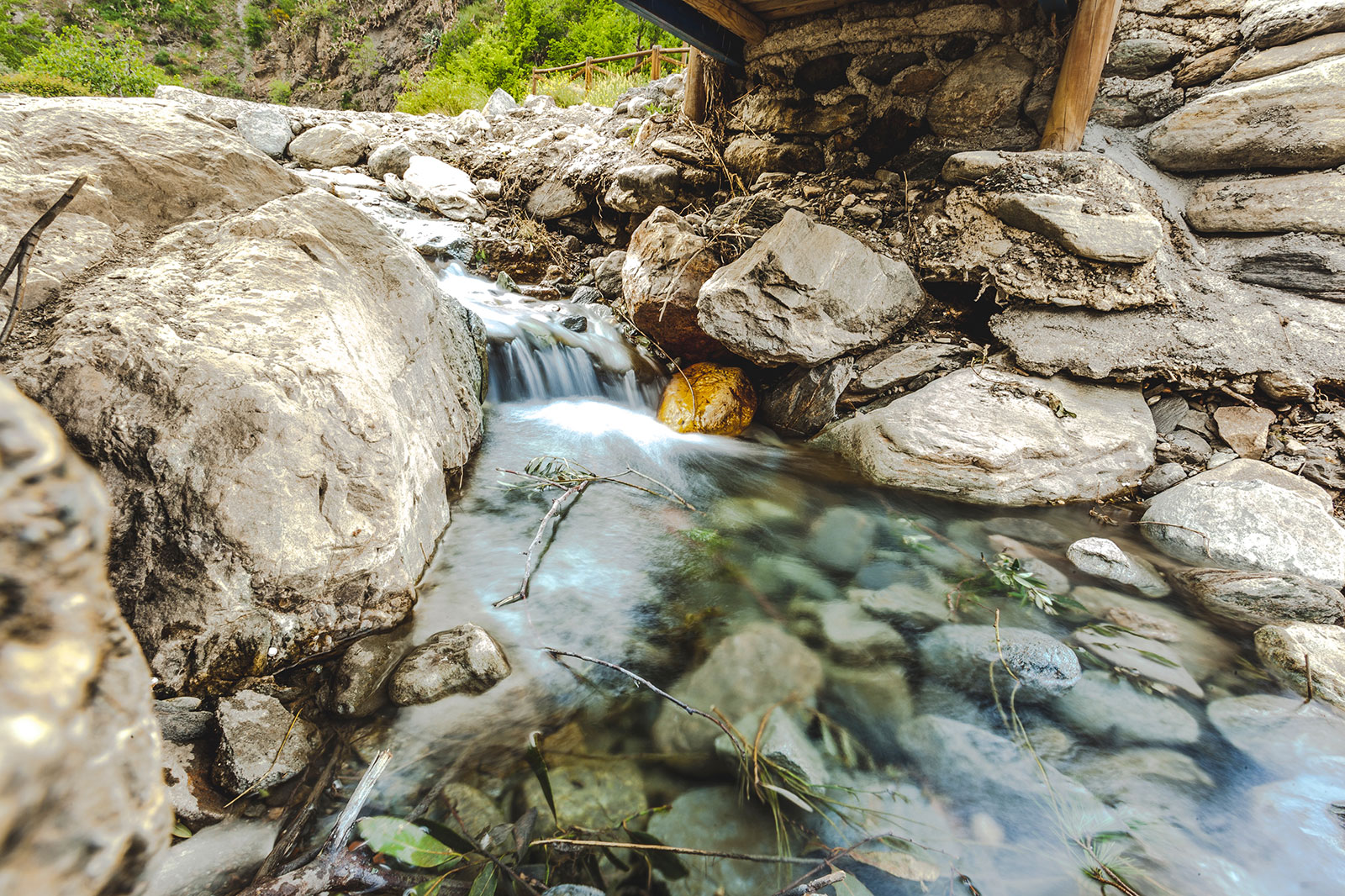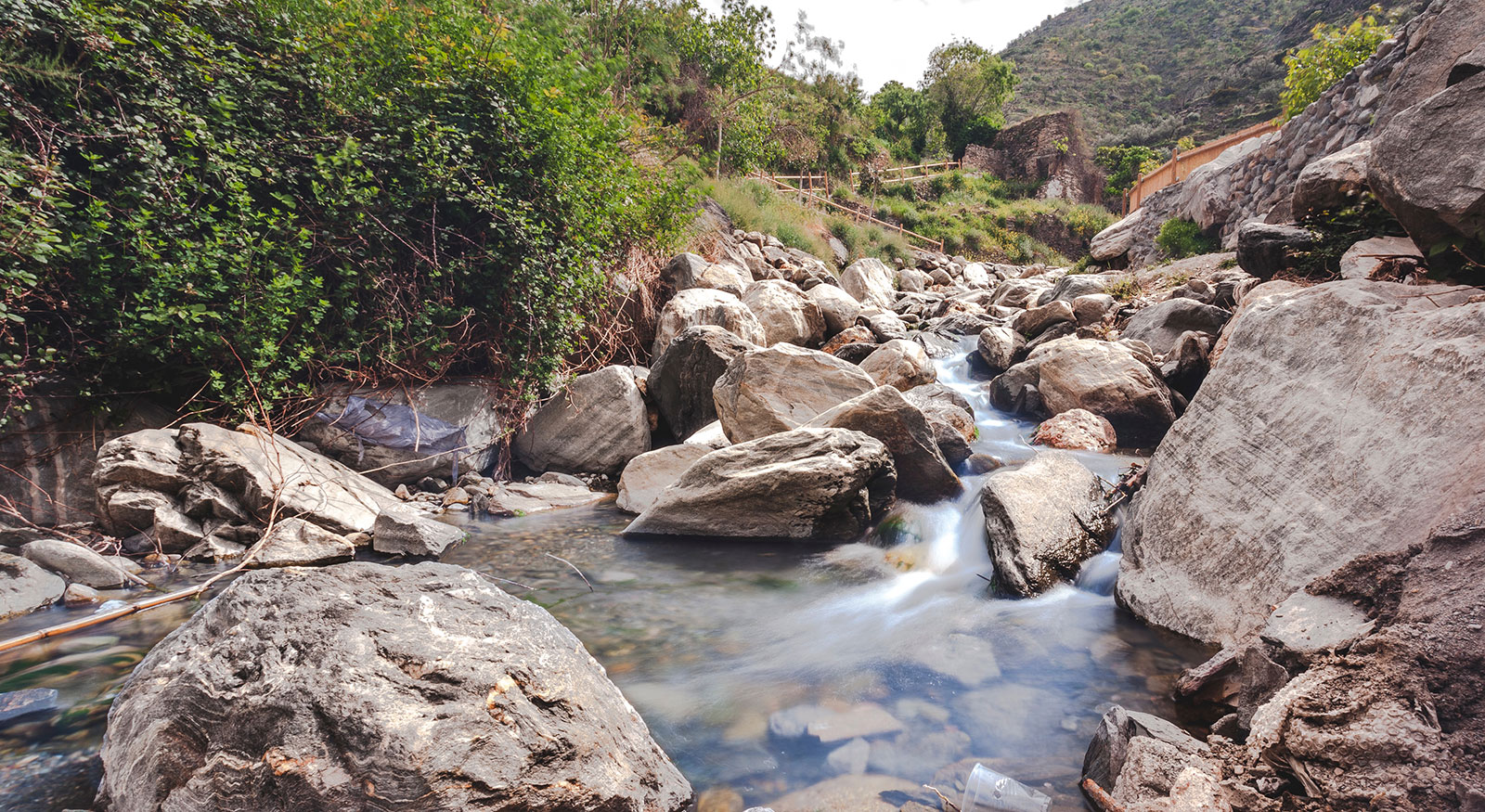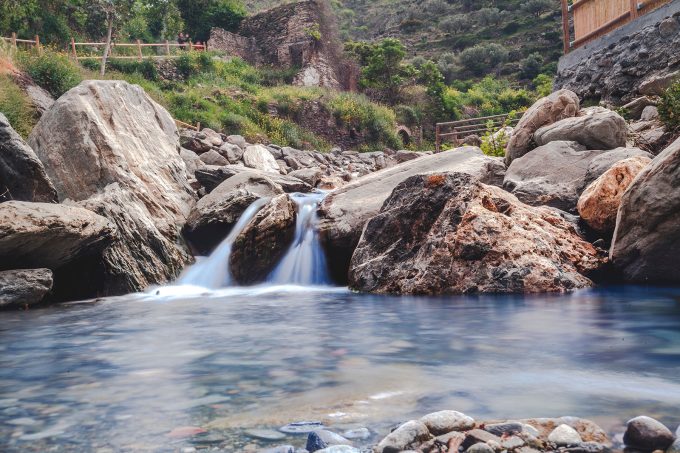Sierro rests at the foot of the Sierra de los Filabres, on the northern slope of that mass of slate. Its gently sloping hills are currently covered by uncultivated almond trees and by “bolinares” and other landscapes of semi-arid scrub that occupy the old farmlands of the dry-land farms that have been abandoned in the last thirty years.
As in the rest of the mountainous territory of southeastern Andalusia, water has made it possible to take more intensive part of the territory. Located next to the Boloyunta River (also known as the Sierro River), where it abandons the narrowness of the channel between opposing hills, the stepped landscape of Sierro is irrigated with waters that come from the melting snow of the Calar Alto and with the contributions of the springs that are feeding the current. In the cortijos of the mountain range also take advantage the small births of irregular course, that give place to picked enclaves of fertility in an environment in which the hardness of the lands of dry land dominates.
The landscape changes gradually as we move away from the valley and we penetrate in height along the municipality looking for the summit of the Sierra de los Filabres. This change is accentuated by human action; in fact, most of the areas are almond or repopulated pine plantations.

In Sierro, in the highest areas, remains of very disturbed holm oaks and sub-spontaneous pine forests of Aleppo pine that coexist with pine forests of repopulation.
The crops in the village are located in the lower parts and particularly next to the river, which is precisely where the topography is softer and the soils are better and deeper. These crops are mostly olives, almonds, potatoes and vegetables.
The factor that explains the location of the main crops in the bottom of the valley is the possibility of using the waters of the river to irrigate the fields, mainly in summer.
A complex network of ditches runs through the rugged profile of Sierro: Monday, Tuesday down, Tuesday up, Martecillo, Wednesday, Thursday, Juevecillo, Friday, Saturday, Alta, Lacuchica, Huertecilla, Alhambra and that of the Mill.
The one on Wednesday, the main canal of the town, collects the waters of a dam on the Boloyunta River:
Previously, there were several more dams, but at present only one dike remains active, since the others have become clogged with the sediments dragged from the slopes. This mother ditch distributes the water to the seven payments in which the vega of the town is divided, payments that receive the name of the days of the week. During the winter months, autumn
and spring, when there is no lack of water because the rain is joined by the thawing of the snow, it is watered freely, “when you want and where you want”, with the only limitation of the time of each irrigator.
When the availability of water is reduced, the “irrigations for payment” begin. Each payment is dominated by a ditch through which the water enters the day of the week that corresponds to it. Within each payment you can irrigate in two ways: “a pará seca” or “asking for the time”. When it is irrigated to para seca, the terraces are watered as the water arrives; the superior ones will be watered before those located below. Asking for the time, it supposes to establish a turn of irrigation as the farmers go to their terraces to irrigate: the early riser starts, who throws the water into the ditch; he
the next that arrives is put to the queue, immediately behind the one that owns the time, and so on. In the village there is no Irrigation Community, and decisions are made as has always been done, according to the custom: the irrigators decide to irrigate para seca when the availability of water is high, while when it is scarce, they choose to ask the time, since everyone wants to water in the face of scarcity, and in this way it is rewarded to the one who truly shows interest in carrying out the irrigation.

The irrigation time of each irrigator is proportional to the irrigated area it has, but if there is a shortage, it can be decided that the irrigation is “per minute”, so that when the assigned time ends, the next irrigator cuts off the water who was watering
The farmhouses are irrigated with water from 10 births, which in many cases are found inside mines. The sources give name to the payments of the town located beyond the meadow, as the Hernando Fountain, the Martinez Fountain or the Juan Santa.
The water is stored in rafts that generally correspond to old pools that have been used by different generations of the inhabitants of the town for the best use of the resource. To irrigate, the “tanda” is followed: a period of days that determines the frequency of irrigation between the different families that form the cortijada.


